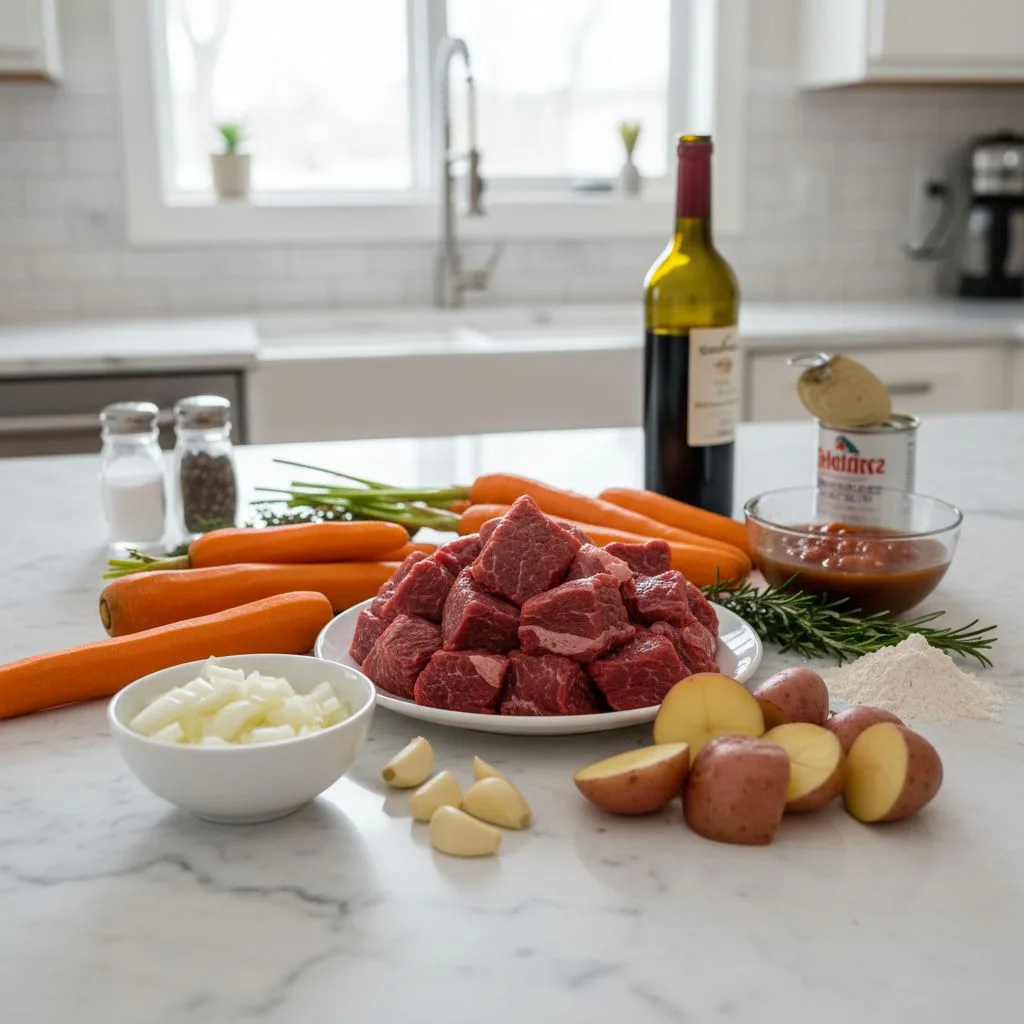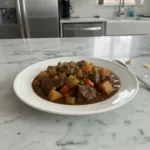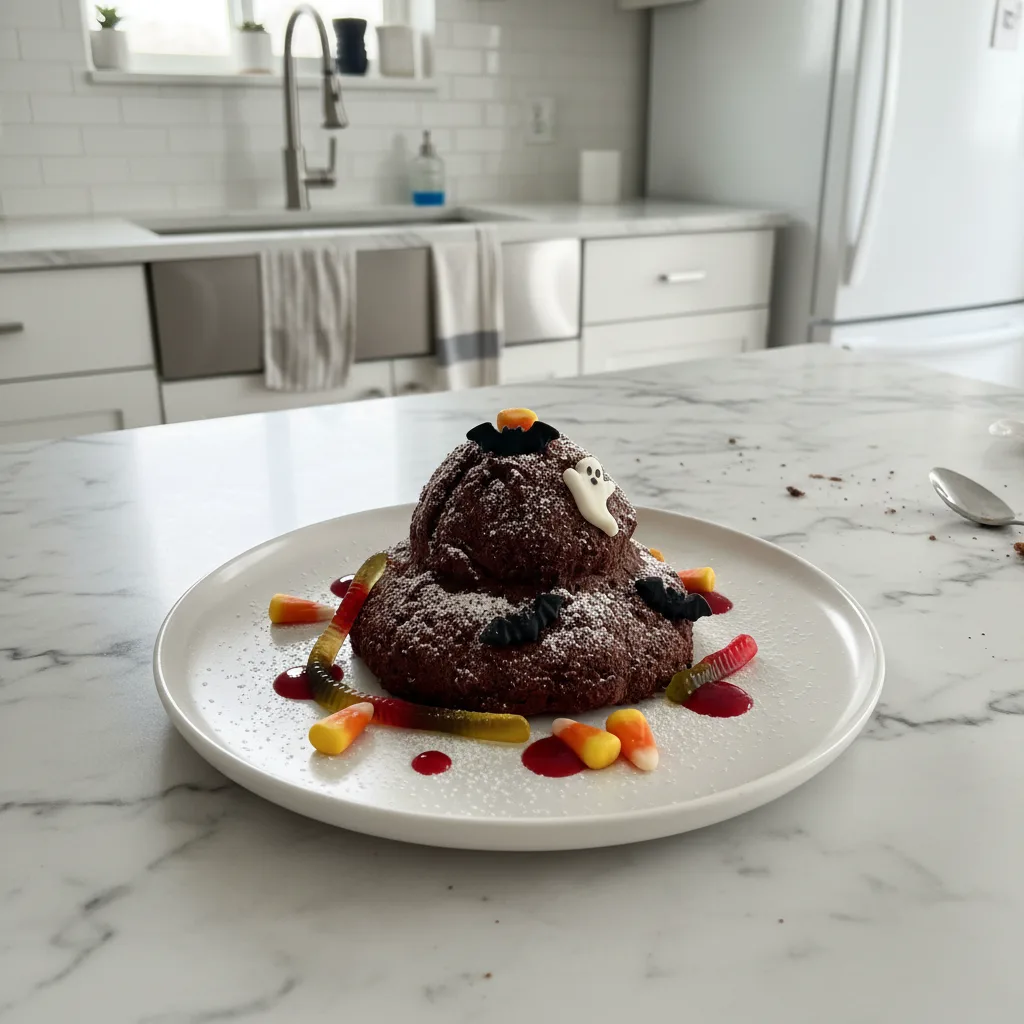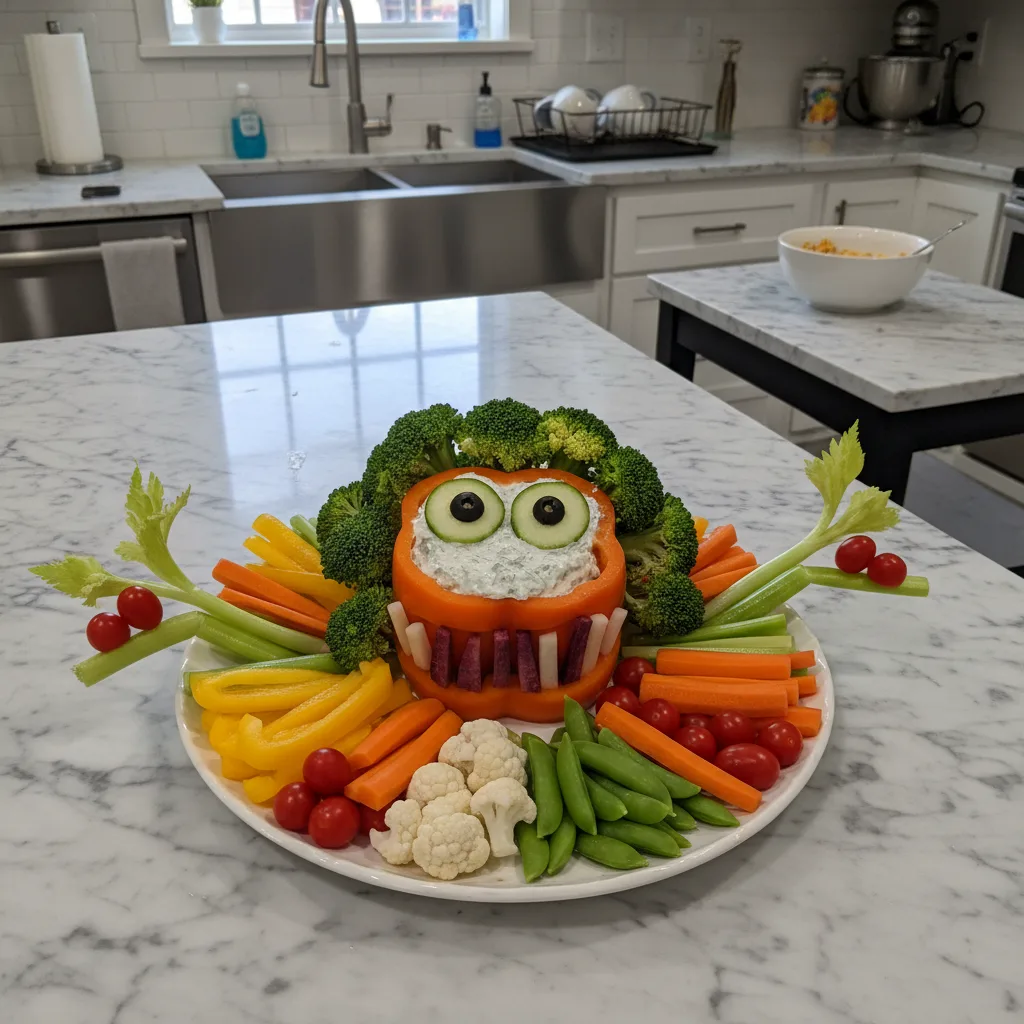I swear, there are some smells that just take you right back, aren’t there? For me, the rich, savory aroma of a simmering beef stew instantly transports me to my Auntie Mae’s kitchen on a blustery Saturday afternoon. I remember trying to “help” her once, probably just getting in the way, and I almost dumped an entire container of salt into the pot! She just laughed, bless her heart. This isn’t just any stew, it’s the Classic Stovetop Beef Stew Recipe that warmed us from the inside out, making everything feel right in the world. It’s got that comforting hug-in-a-bowl vibe, perfect for chasing away the chill. Honestly, it’s a dish that feels like home, no matter where you are.
My first solo attempt at this Classic Stovetop Beef Stew Recipe was, let’s just say, an adventure. I totally forgot to sear the beef properly, so it ended up a bit… grey. And then I added too much water and it was more like beef soup. Oops! I was so disappointed, but I learned so much from that little kitchen disaster. It taught me patience, and that sometimes, you just gotta trust the process. Now, I’ve got it down, and I’m excited to share all my little secrets and even my past blunders so you don’t make the same ones.
Ingredients for Classic Stovetop Beef Stew Recipe
Stew Essentials
- Beef Chuck Roast (2 lbs): This is your star! Honestly, chuck roast has the perfect amount of marbling to get super tender and shreddable after a long, slow simmer. I tried stew meat once, but it was a mix of cuts and some pieces stayed tough. Stick with a good chuck roast, trust me.
- Beef Broth (4 cups): The foundation of all that rich, savory goodness. I always use a good quality, low-sodium beef broth so I can control the salt myself. Don’t cheap out here, it makes a difference. I once used just water, and it was so bland, never again!
Aromatic Boosters
- Yellow Onion (1 large): The unsung hero! It adds a sweet, savory base when sautéed. Don’t rush browning it, that deep caramelization builds so much flavor. I always chop mine a little chunky because I like finding those soft bits in the stew.
- Garlic (4 cloves): You can never have too much garlic, in my opinion! Freshly minced is non-negotiable here. It brings that pungent, warm aroma that just smells like comfort. I’ve tried garlic powder in a pinch, and it was… fine, but fresh is always better.
- Tomato Paste (2 tbsp): This little tube is a powerhouse! It adds a deep umami richness and a touch of acidity that brightens everything up. Make sure to cook it down for a minute or two before adding liquids, it really deepens its flavor.
Vegetable Medley
- Carrots (3 medium): Sweet and vibrant, they soften beautifully in the stew. I like to cut them into chunky rounds or big diagonal slices. I once overcooked them into mush, so now I add them a little later in the cooking process.
- Celery (2 stalks): Adds a subtle earthy note and texture. Chop it similarly to the carrots so it cooks evenly. It’s not the flashiest ingredient, but it’s important for that classic stew flavor profile.
- Potatoes (1.5 lbs Yukon Gold or Red Bliss): These hold their shape well and get wonderfully creamy. I cut them into decent-sized chunks, maybe 1.5 inches. Don’t use russets unless you want potato flakes in your stew, they just fall apart too much!
Flavor Finishers
- Worcestershire Sauce (1 tbsp): A secret weapon for savory depth! Just a splash adds so much complexity and umami. I never skip it.
- Fresh Parsley (1/4 cup, chopped): For a pop of freshness and color at the end. It brightens up the whole dish and makes it look pretty. I love the smell of freshly chopped parsley, it’s so vibrant.
- Salt and Black Pepper (to taste): Essential for seasoning every layer.
Instructions for Classic Stovetop Beef Stew Recipe
- Sear the Beef Just Right:
- Okay, this is where the magic starts for our Classic Stovetop Beef Stew. Pat your beef chuck roast cubes really dry, seriously, this is crucial for a good sear! Heat a heavy-bottomed pot or Dutch oven over medium-high heat with a bit of oil. Don’t overcrowd the pot, hon, work in batches. You want a deep, beautiful brown crust on all sides. This isn’t just for looks, it locks in flavor. I remember rushing this once, and the stew just didn’t have that rich depth. Take your time, let it get nice and dark, and you’ll smell that amazing caramelization happening.
- Build the Flavor Base:
- Once your beef is seared and set aside, toss in your chopped onions and celery. Lower the heat a bit and let them soften, scraping up all those yummy browned bits from the bottom of the pot that’s called fond, and it’s pure flavor gold! Stir in the minced garlic and tomato paste, letting them cook for another minute or two until fragrant. You’ll notice the tomato paste deepening in color and smelling a little sweeter, which means it’s ready. This step, honestly, is where you lay down the groundwork for a truly delicious stovetop beef stew, so don’t skimp on the sauté time.
- Deglaze and Simmer:
- Pour in your beef broth and Worcestershire sauce. Give it a good scrape with a wooden spoon to release any remaining bits stuck to the bottom. Add the seared beef back into the pot. Bring it to a gentle simmer, then reduce the heat to low, cover the pot, and let it cook for about 1.5 to 2 hours. This long, slow cook is what makes the beef so incredibly tender, practically melting in your mouth. I always peek in and stir every now and then, just to make sure nothing’s sticking. You’ll start to smell that wonderful, rich stew aroma filling your kitchen that’s when you know it’s working!
- Add the Veggies:
- After the beef has had its initial simmer time and is getting tender, it’s time for the vegetables! Add your potatoes and carrots to the pot. Give everything a good stir to combine, making sure the veggies are mostly submerged in the liquid. Cover the pot again and continue to simmer for another 45 minutes to an hour, or until the potatoes and carrots are fork-tender. This timing ensures they cook through without turning into mush. I learned my lesson about adding them too early when I ended up with indistinguishable vegetable paste, oops!
- Thicken and Season the Stew:
- Now for the finishing touches. If your stew isn’t quite as thick as you’d like, you can make a quick slurry with a tablespoon of cornstarch mixed with a tablespoon of cold water, then stir it into the simmering stew. Let it cook for a few more minutes until it thickens. Taste your Classic Stovetop Beef Stew Recipe and adjust the seasonings. This is where you really make it yours! Add more salt, pepper, or even a pinch of dried thyme if you feel it needs it. I always add a generous crack of black pepper here. Don’t be shy!
- Serve and Garnish:
- Once your stovetop beef stew is perfectly seasoned and the consistency is just right, remove it from the heat. Ladle generous portions into bowls. Before serving, I love to sprinkle a good handful of fresh, chopped parsley over each bowl. It adds a beautiful pop of color and a fresh, herbaceous counterpoint to the rich stew. It just makes it feel complete, you know? Serve it up with some crusty bread for dipping, and watch everyone dig in. It’s truly a satisfying meal that just warms your soul.
Honestly, I still get a little thrill when I lift the lid off the pot and that amazing aroma of a hearty beef stew fills the kitchen. It reminds me of those simple, cozy days. One time, my dog, Buster, was so entranced by the smell he tried to sneak a piece of beef right off the counter! He didn’t succeed, but his enthusiasm was pretty cute. It’s these little moments that make cooking so much more than just putting food on the table.
Storage Tips for Classic Stovetop Beef Stew Recipe
Okay, so you’ve made a big pot of this wonderful Classic Stovetop Beef Stew Recipe, and you’re wondering about leftovers. Good news! This stew is honestly even better the next day, once all those flavors have had more time to get to know each other. Let it cool completely before transferring it to airtight containers. I usually portion it out into individual servings because it makes grabbing a quick lunch so much easier. It’ll keep beautifully in the fridge for 3-4 days. I tried freezing it once in a flimsy container, and it got freezer burn, now I use heavy-duty freezer-safe bags or containers. It freezes wonderfully for up to 3 months. Just thaw it overnight in the fridge and reheat gently on the stovetop or in the microwave. Don’t microwave it too aggressively, or the potatoes can get a bit mealy, I learned that the hard way!

Classic Stovetop Beef Stew Recipe Ingredient Substitutions
Life happens, and sometimes you don’t have every ingredient on hand. For the beef, if chuck roast isn’t available, beef round or even short ribs (boneless, cut into chunks) could work, though they might need a slightly longer simmer. I tried venison once, and it worked, but it had a stronger gamey flavor, so adjust spices if you go that route. No beef broth? Vegetable broth can be used, but you’ll miss some of that deep beefy flavor. I’ve swapped regular potatoes for sweet potatoes before, it gives the stew a lovely, subtle sweetness that’s quite nice, though not traditional. If you don’t have fresh garlic, a teaspoon of garlic powder can substitute a clove, but honestly, fresh is best for this stovetop beef stew. Feel free to add other root vegetables like parsnips or turnips if you have them they absorb the flavors beautifully.
Serving Suggestions for Classic Stovetop Beef Stew Recipe
This Classic Stovetop Beef Stew Recipe is a meal in itself, but it loves a good sidekick! My absolute favorite way to serve it is with a big, crusty loaf of artisanal bread for soaking up all that incredible sauce. A dollop of sour cream or a sprinkle of sharp cheddar cheese on top adds a creamy, tangy touch that I just adore. For something green, a simple side salad with a light vinaigrette cuts through the richness beautifully. If you’re feeling fancy, some mashed potatoes underneath the stew are heavenly, turning it into more of a “pot roast” style meal. And for drinks? A robust red wine, like a Cabernet Sauvignon, pairs wonderfully, or just a simple glass of iced tea for a casual weeknight. This dish and a cozy movie night? Yes please!
Cultural Backstory of Beef Stew
Beef stew, in its many forms, has been a comforting staple in kitchens across the globe for centuries, a true testament to its hearty appeal. It’s one of those dishes that tells a story of resourcefulness, using tougher cuts of meat and seasonal vegetables to create something truly nourishing. My own family’s Classic Stovetop Beef Stew Recipe tradition started with my great-grandmother, who brought her simple, hearty cooking traditions from the old country. It wasn’t fancy, but it was always deeply flavorful and filling. Every time I make it, I feel a connection to those generations, a sense of continuing a culinary lineage. It’s more than just food, it’s history and love simmering in a pot, making it special for me.
Making this Classic Stovetop Beef Stew Recipe always feels like a little ritual, a way to slow down and create something truly special. The house smells incredible, the beef gets so tender it practically sighs apart, and honestly, every spoonful feels like a warm embrace. It’s a dish that never disappoints, a reliable friend on a cold day. I really hope you give it a try and make it your own, maybe even start a new tradition in your kitchen. Share your stew stories with me, I’d love to hear them!

Frequently Asked Questions About Classic Stovetop Beef Stew Recipe
- → How do I make my Classic Stovetop Beef Stew Recipe extra tender?
The secret is low and slow, hon! Don’t rush the simmering process. Let it cook for at least 2.5 to 3 hours total, or even longer, until the beef easily falls apart with a fork. I once tried to speed it up and the beef was chewy, so patience really pays off here!
- → Can I use different vegetables in this stovetop beef stew?
Absolutely! I’ve tossed in parsnips, turnips, or even green beans towards the end. Just be mindful of their cooking times. Bell peppers can be nice too, added with the carrots, but they’ll give a slightly different flavor profile. Experiment and see what you like!
- → What if my stew is too thin or too thick?
If it’s too thin, a cornstarch slurry (equal parts cornstarch and cold water) stirred in at the end works wonders. For a stew that’s too thick, simply add a splash more beef broth or water until it reaches your desired consistency. I always have extra broth on hand for this very reason!
- → How long does Classic Stovetop Beef Stew Recipe last in the fridge?
It keeps really well! Once cooled, store it in an airtight container in the fridge for 3-4 days. Honestly, the flavors deepen beautifully overnight, so it often tastes even better the next day. I love having it ready for a quick lunch!
- → Can I make this Classic Stovetop Beef Stew Recipe in a slow cooker?
You can! Sear the beef and sauté the aromatics first for best flavor, then combine everything in the slow cooker and cook on low for 6-8 hours or on high for 3-4 hours. The texture might be slightly different, but it’s still delicious and super convenient for busy days.

Hearty Classic Stovetop Beef Stew Recipe: A Sunday Tradition
- Prep Time: 25 Minutes
- Cook Time: 2 Hours 45 Minutes
- Total Time: 3 Hours 10 Minutes
- Yield: 6 Servings 1x
- Category: Desserts
Description
Learn my family’s Classic Stovetop Beef Stew Recipe for a rich, comforting meal. Tender beef, hearty veggies, and deep flavors simmered to perfection.
Ingredients
- Stew Essentials:
- 2 lbs beef chuck roast, cut into 1.5-inch cubes
- 4 cups beef broth, low-sodium
- Aromatic Boosters:
- 1 large yellow onion, chopped
- 4 cloves garlic, minced
- 2 tbsp tomato paste
- Vegetable Medley:
- 3 medium carrots, peeled and cut into 1-inch pieces
- 2 stalks celery, cut into 1-inch pieces
- 1.5 lbs Yukon Gold or Red Bliss potatoes, peeled and cut into 1.5-inch chunks
- Flavor Finishers:
- 1 tbsp Worcestershire sauce
- 1/4 cup fresh parsley, chopped (for garnish)
- Salt and black pepper, to taste
- 1 tbsp cornstarch (optional, for thickening)
- 1 tbsp cold water (optional, for cornstarch slurry)
- 2 tbsp olive oil or vegetable oil
Instructions
- Sear the Beef Just Right:: Okay, this is where the magic starts for our Classic Stovetop Beef Stew. Pat your beef chuck roast cubes really dry; seriously, this is crucial for a good sear! Heat a heavy-bottomed pot or Dutch oven over medium-high heat with a bit of oil. Don’t overcrowd the pot, hon; work in batches. You want a deep, beautiful brown crust on all sides. This isn’t just for looks; it locks in flavor. I remember rushing this once, and the stew just didn’t have that rich depth. Take your time, let it get nice and dark, and you’ll smell that amazing caramelization happening.
- Build the Flavor Base:: Once your beef is seared and set aside, toss in your chopped onions and celery. Lower the heat a bit and let them soften, scraping up all those yummy browned bits from the bottom of the pot—that’s called fond, and it’s pure flavor gold! Stir in the minced garlic and tomato paste, letting them cook for another minute or two until fragrant. You’ll notice the tomato paste deepening in color and smelling a little sweeter, which means it’s ready. This step, honestly, is where you lay down the groundwork for a truly delicious stovetop beef stew, so don’t skimp on the sauté time.
- Deglaze and Simmer:: Pour in your beef broth and Worcestershire sauce. Give it a good scrape with a wooden spoon to release any remaining bits stuck to the bottom. Add the seared beef back into the pot. Bring it to a gentle simmer, then reduce the heat to low, cover the pot, and let it cook for about 1.5 to 2 hours. This long, slow cook is what makes the beef so incredibly tender, practically melting in your mouth. I always peek in and stir every now and then, just to make sure nothing’s sticking. You’ll start to smell that wonderful, rich stew aroma filling your kitchen – that’s when you know it’s working!
- Add the Veggies:: After the beef has had its initial simmer time and is getting tender, it’s time for the vegetables! Add your potatoes and carrots to the pot. Give everything a good stir to combine, making sure the veggies are mostly submerged in the liquid. Cover the pot again and continue to simmer for another 45 minutes to an hour, or until the potatoes and carrots are fork-tender. This timing ensures they cook through without turning into mush. I learned my lesson about adding them too early when I ended up with indistinguishable vegetable paste, oops!
- Thicken and Season the Stew:: Now for the finishing touches. If your stew isn’t quite as thick as you’d like, you can make a quick slurry with a tablespoon of cornstarch mixed with a tablespoon of cold water, then stir it into the simmering stew. Let it cook for a few more minutes until it thickens. Taste your Classic Stovetop Beef Stew Recipe and adjust the seasonings. This is where you really make it yours! Add more salt, pepper, or even a pinch of dried thyme if you feel it needs it. I always add a generous crack of black pepper here. Don’t be shy!
- Serve and Garnish:: Once your stovetop beef stew is perfectly seasoned and the consistency is just right, remove it from the heat. Ladle generous portions into bowls. Before serving, I love to sprinkle a good handful of fresh, chopped parsley over each bowl. It adds a beautiful pop of color and a fresh, herbaceous counterpoint to the rich stew. It just makes it feel complete, you know? Serve it up with some crusty bread for dipping, and watch everyone dig in. It’s truly a satisfying meal that just warms your soul.








